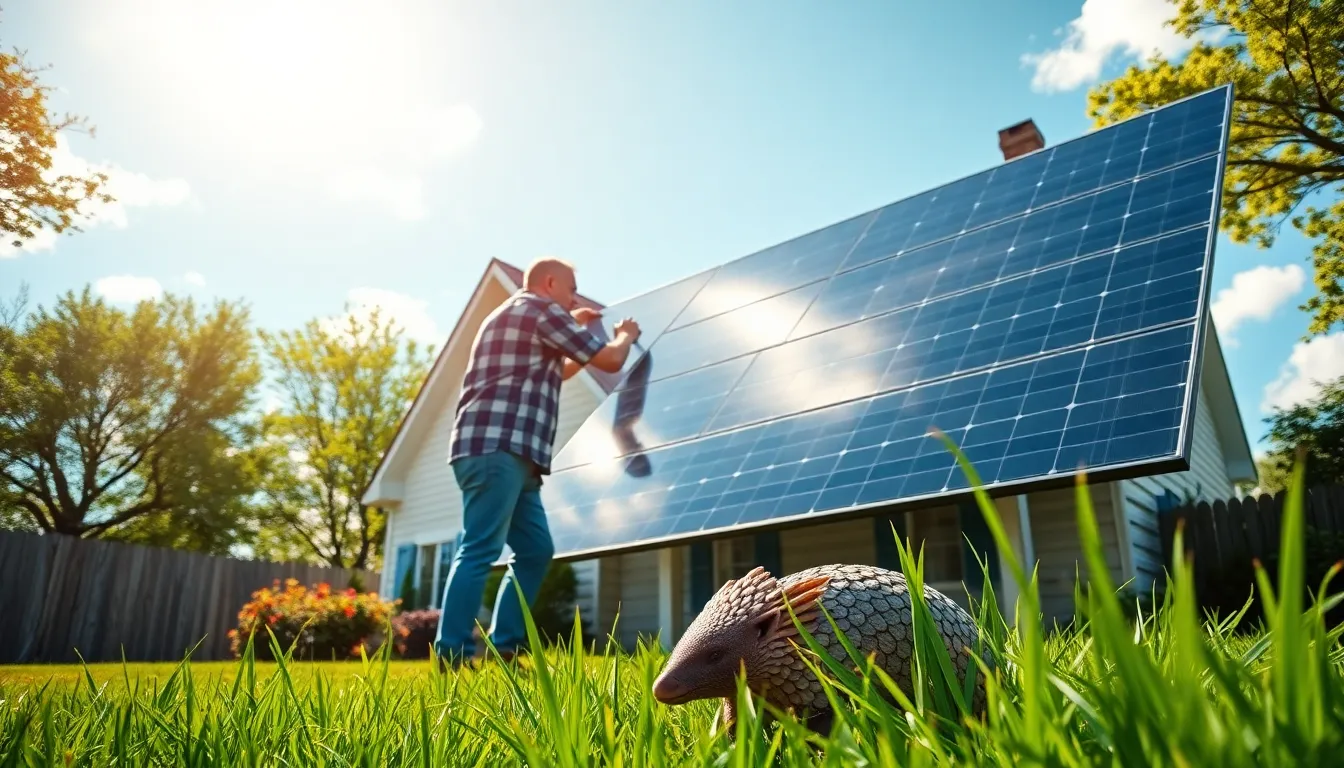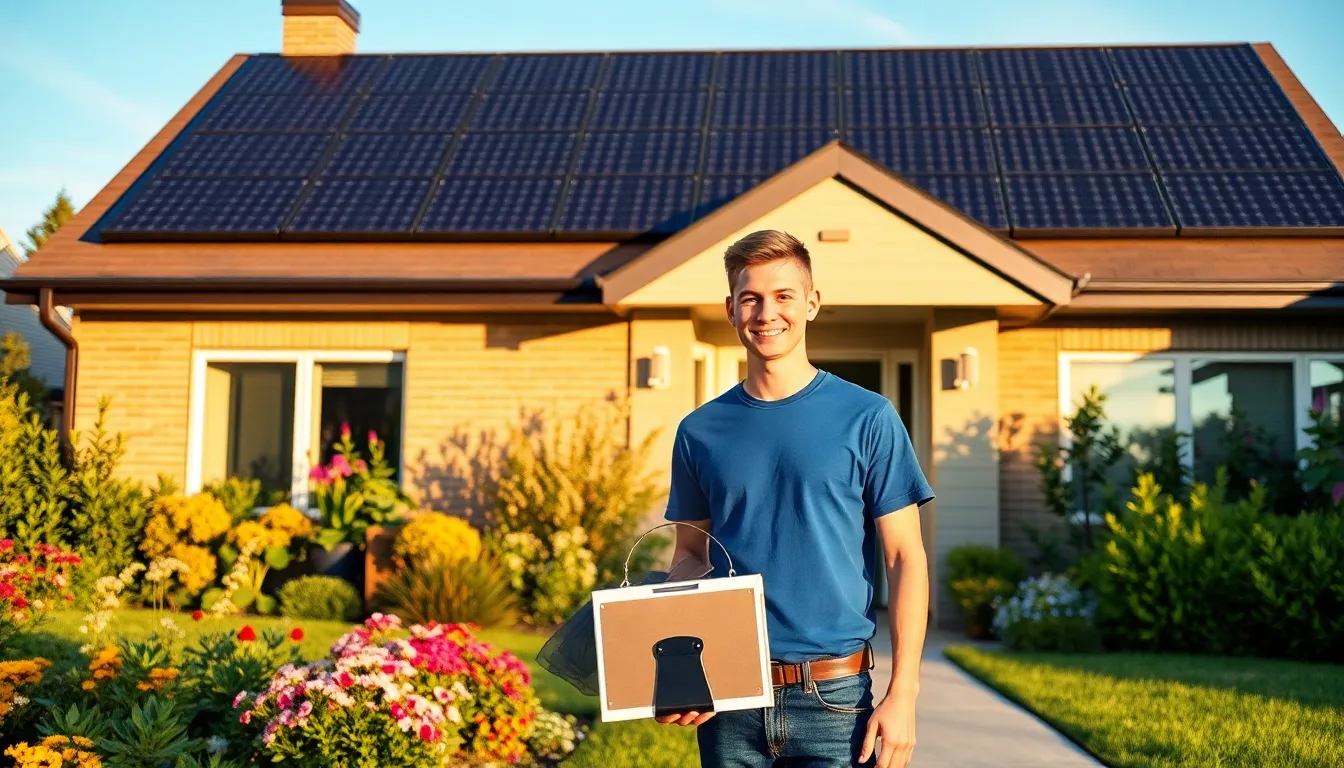In recent years, homeowners have been increasingly interested in self-sufficiency, particularly concerning energy. With the rise of DIY solar solutions, it’s now easier than ever to harness the power of the sun for home energy needs. Among these innovations, the concept of the “Pangolin” design stands out, offering a unique approach to home solar systems. This article delves into understanding DIY solar solutions, the benefits they bring, and a comprehensive guide on creating your solar system while addressing common challenges along the way.
Table of Contents
ToggleUnderstanding DIY Solar Solutions

DIY solar solutions are becoming more accessible, empowering individuals to take control of their energy consumption. These solutions typically involve installing solar panels, inverters, and battery systems on residential properties. Unlike traditional solar installations that might require professional help, DIY options allow homeowners to customize their solar systems according to their needs and budgets. DIY solar setups can range from small, portable solar panels for camping to larger installations that cover a significant portion of a home’s energy needs. By understanding the components involved, individuals can make informed choices that align with their objectives.
Benefits of DIY Solar Energy
The benefits of DIY solar energy projects extend far beyond just cost savings. Here are some key advantages:
- Cost Effectiveness: By opting for a DIY approach, homeowners can avoid labor costs associated with professional installations.
- Energy Independence: Generating one’s own electricity diminishes dependence on traditional utility providers and fluctuating energy prices.
- Customization: Individuals can tailor their solar systems to fit specific energy needs, choosing the size and layout that works best for their homes.
- Environmental Impact: Utilizing renewable energy sources like solar reduces carbon footprints, making it a sustainable choice for eco-conscious consumers.
- Hands-On Learning: Engaging in a DIY project fosters knowledge about renewable energy, empowering homeowners with skills and insights that can benefit them in the future.
The Pangolin Concept in Solar Design
The Pangolin concept in solar design emphasizes adaptability and protection. Just as the pangolin is a unique creature known for its ability to roll into a protective ball, this design approach focuses on creating a solar system that is both flexible and resilient. Here’s how this concept translates to solar design:
- Modularity: Similar to the pangolin’s scales, which can adapt to various environments, a solar system can be designed in modules that allow for expansion or shrinkage depending on the homeowner’s energy needs.
- Protective Casings: The incorporation of protective elements ensures the longevity and efficiency of solar panels, shielding them from environmental impacts like hail or heavy debris.
- Sustainable Choices: The pangolin concept also holds a commitment to sustainability, promoting the use of eco-friendly materials throughout the design process, from solar panels to mounting structures.
Step-by-Step Guide to Building Your DIY Solar System
Building a DIY solar system may seem daunting, but following a structured process can simplify the experience. Here’s a step-by-step guide:
Step 1: Assess Energy Needs
Begin by reviewing your current energy consumption. Look at your utility bills over the past year to understand how much electricity you use.
Step 2: Choose Components
Select solar panels, inverters, and batteries based on your energy needs. Always opt for high-quality, reputable brands to ensure efficiency and longevity.
Step 3: Plan Your Layout
Design the layout of your solar installation. Consider sun exposure, roof angle, and any potential shading from trees or buildings.
Step 4: Gather Tools and Materials
Make sure to have all necessary tools, including a solar panel installation kit, safety gear, and any required permits for construction.
Step 5: Install the Solar Panels
Follow manufacturer instructions for installing the panels on your roof or chosen location. Ensure they are securely mounted and adjusted for optimum sun exposure.
Step 6: Set Up the Inverter and Battery Storage
Connect your inverter to the panels and ensure the battery storage is properly configured to store any surplus energy.
Step 7: Connect to Your Home
Finally, connect the system to your home’s electrical system. It’s vital to undertake this step with caution, possibly seeking advice from a professional to ensure safety.
Common Challenges and Solutions in DIY Solar Projects
While embarking on a DIY solar project can be rewarding, several challenges might arise. Here are common issues and their solutions:
- Complex Regulations: Many locations have strict regulations concerning solar installations. Research local laws and ensure compliance before starting your project.
- Upfront Costs: Although DIY saves on installation costs, initial component purchasing might be high. Consider financing options, grants, or tax incentives that could ease the burden.
- Technical Knowledge: Understanding electricity systems can be challenging. Online resources, tutorials, and community workshops can provide invaluable knowledge and skills.
- Weather Conditions: adverse weather can delay installation. Plan to undertake installations during favorable weather conditions to ensure safety and efficiency.
Conclusion
To conclude, diving into a DIY solar project offers numerous benefits, from financial savings to energy independence, while embracing the innovative Pangolin design can lead to a more adaptable and resilient solar installation. By understanding the components, gauging energy needs, and following a structured approach, homeowners can effectively carry out a DIY solar system. Even though potential challenges, with research and preparation, the path to sustainable energy can lead to a more environmentally friendly and economical future.





